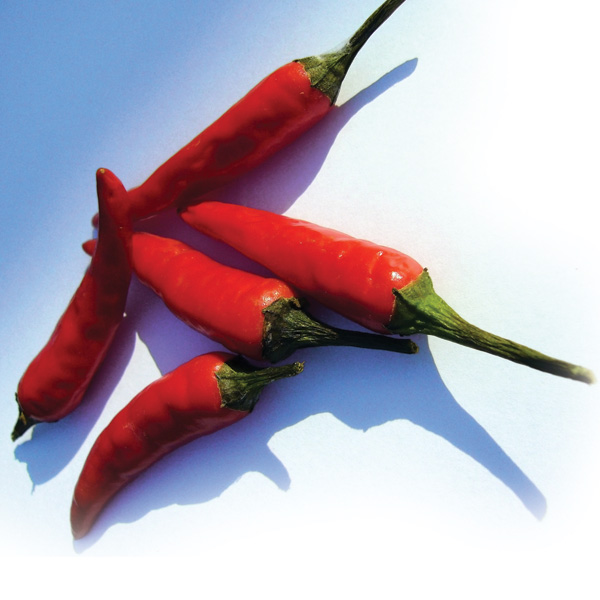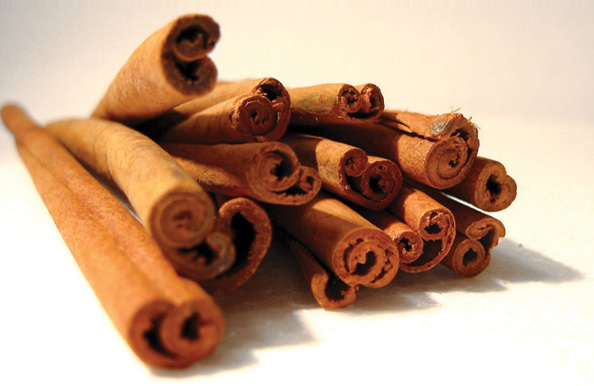- In Parrots Blog
Parrots adore chillies
 - and the spicier the better!
- and the spicier the better!
By Pauline James
Birds are different to mammals in that they can tolerate fresh, red-hot, spicy chillies, which provoke in us, a strong irritant, and acute burning reaction, from our sensory system. In fact, the effect of fresh chilli in our mouths or eyes can be so over-powering that sprays containing capsaicin, the active ingredient in chillies, are used to repel grizzly bears and elephants in certain situations in the wild. But parrots, positively relish chomping away on a whole jalapeno, tabasco, or the much hotter, habaneros peppers, and consume not only the spicy flesh, but the highly pungent seeds too!
The chilli pepper genus Capsicum, comprise about 25 species, of which five are regularly cultivated. All wild chillies contain varying amounts of the chemical capsaicin and related compounds. Sweet or bell peppers are cultivated varieties that have been selected for their low capsaicin content. Capsaicin is not a protein, but a nitrogen-containing lipid related to vanillin, the main active ingredient in vanilla. The higher the concentration of capsaicin, usually found in the smallest red chillies, the hotter they are. The hotness of chillies is measured in ’Scoville heat units’ (SHU) and on this scale a sweet bell pepper scores 0, a jalapeno pepper 2,500-4,000, a tabasco 30,000-50,000, and a Mexican habaneros 200,000-500,000!
Why chillies are hot
There is an evolutionary explanation, as to why birds are impassive to capsaicin. When birds consume the fruits and seeds of chilli plants growing in the wild, they distribute the whole seeds in their droppings over a wide area. Mammals, chew their food more efficiently and the seeds would not survive their journey through the digestive tract. Therefore, it is in the plant’s best interest that its seeds be ingested by birds, not mammals, and the presence of a compound that irritates mammals, but not birds, greatly increases the chances of a fruit being ingested by a bird. Some varieties of chillies are even known as ‘bird peppers.’
Chillies also evolved their spiciness as a defence mechanism, to deter the destructive Fusarium fungus, especially virulent in wet climates, from feasting on the chilli’s flesh and seeds. In dryer areas, non-spicy chilli plants are far more common, as these fungal defences are less important. Instead, the plant puts its energy into being as water-efficient as possible, rather than producing heat, and possesses fewer pores on their leaves, minimising water vapour loss, helping them to thrive when water is scarce. As a result, these non-pungent chilli plants flourish in water-stressed conditions and produce twice the number of seeds, of pungent plants found in dry conditions.
Health benefits
Chillies and peppers contain many health promoting and disease preventing properties. Capsaicin their main active ingredient is antibacterial, is an anti-cancer agent, has anti-diabetic properties, reduces LDL cholesterol levels, increases blood flow and provides euphoric endorphins in the blood stream, boosting a parrot’s feel good factor. It also has astringent and counter-irritant properties, is a natural digestive aid, and an effective pain-killer.
Chilli peppers also contain high levels of flavanoids, vitamin A, including beta carotene, alpha carotene, lutein, zeaxanthin and cryptoxantins, higher levels of vitamin C than a lemon, and possesses many of the B-complex group of vitamins, including: niacin (B3), pyridoxine (B6), riboflavin (B2) and thiamin (vitamin B1). Chillies also contain high levels of minerals, such as potassium, manganese, iron and magnesium.
Cayenne pepper, chilli powder and paprika...
Cayenne pepper is made from a blend of ground mixed chillies, which are generally rated at around 30,000-50,000 SHUs. Parrots love the taste, and will often try new and unfamiliar foods if cayenne is sprinkled over the top of it.
Pure chilli powder, also made from a blend of mixed chillies, could be offered, but beware of brands that have added salt, pepper, cumin, garlic or oregano.
Paprika is made from one particular variety of chilli, and has sometimes gone through a smoking process to give it its distinct taste. It has a far less complex, one-note flavour, and the more common, milder version, contains little capsaicin, and is graded at 500 SHUs.
Beware touching fresh chillies...
A few pieces of dried peppers are often found in better quality parrot seed mixes, but eating them fresh provides a more enjoyable and different experience for a parrot, and offers a higher level of nutrients.
But, beware of kissing your parrot’s beak after feeding chillies! The best cure for seriously ‘burning’ lips is bathing them in milk or yoghurt. This dilutes the concentration of capsaicin, and also prevents it having contact with the stomach walls. Water is not effective, because capsaicin cannot dissolve in it, as it is a ‘hydrophobic’ molecule, repelled by water, but it can dissolve in liquids that contain some fat. Chilli on your fingers, or on a work surface, can be removed by using hot soapy water.


 by Pauline James
by Pauline James